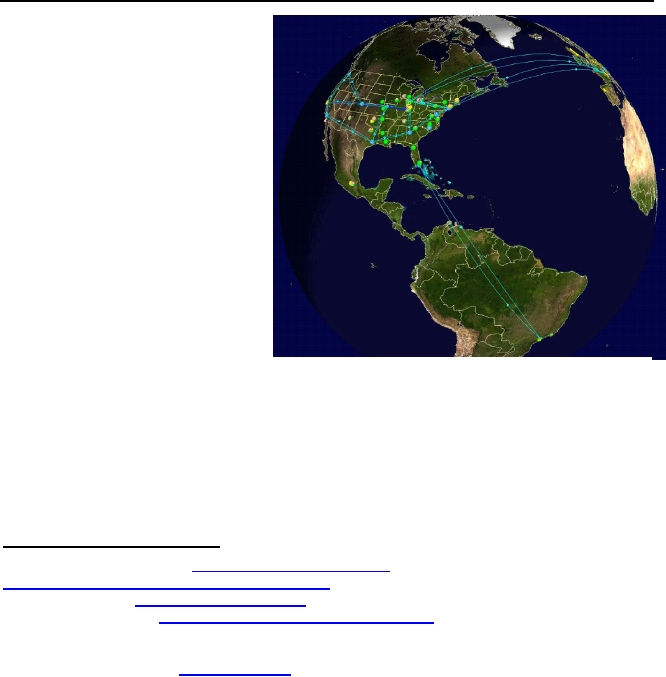implementation for Linux requires a modified kernel to work and we have continued
development of a "standard" UltraLight kernel36 as part of our project.
One of the key advances in 2007 was the broader scale deployment and field-testing of the Fast
Data Transfer (FDT)37 tool, a Java application that runs on all major platforms and uses the Java
NIO libraries38 to achieve stable disk reads and writes coordinated with smooth data flow across
the long-range network. FDT streams a large set of files between a pair of open TCP sockets, so
that a large data set composed of thousands of files, as is typical in high-energy physics
applications, can be sent or received at full speed, without the network transfer restarting between
files. By combining FDT with FAST TCP and an optimized Linux kernel, UltraLight has reached
unprecedented throughput levels, limited only by the speeds of the disks that corresponded to 9
GBytes/sec reading from, or 5 GBytes/sec writing to a single rack of 40 low-cost servers. The
Section 14 of the primary SCIC report discusses what we were able to achieve using UltraLight
technology at SuperComputing 2007.
Global Network Services:
Significant progress has been made in
prototyping the needed services for
global network management. Network
monitoring is essential for the
UltraLight project, particularly in our
efforts to understand the network
infrastructure and its performance
both historically and in real-time to
enable the network as a managed
robust
component
of
our
infrastructure.
The
MonALISA
framework allows us to collect a
complete
set
of
network
measurements and to correlate these
measurements from different sites to
present a global picture. UltraLight
has developed a real time network
topology monitoring agent in the
MonALISA system which provides
Figure 83: The UltraLight Network Testbed,
a complete picture of the
spanning the U.S. to Europe and South America, as
connectivity graphs and delay on
monitored by MonALISA.
each segment for routers and
networks. This information is used to spot asymmetric routing, segments with problems, and it
also allows identification of possibly better alternative paths between end points.
Quality of Service (QoS) mechanisms are being studied in UltraLight and progress has been
made, in conjunction with ESnet40 and the OSCARS41 and TeraPaths42 projects on developing
36
UltraLight Kernal web page, http://ultralight.caltech.edu/web-
site/ultralight/workgroups/network/Kernel/kernel.html
37
Fast Data Transfer, http://monalisa.cern.ch/FDT
38
New I/O Java libraries, http://java.sun.com/j2se/1.4.2/docs/guide/nio/
39
H. Newman, I. Legrand, J. Bunn, "A Distributed Agent-based Architecture for Dynamic Services", in
Proceedings of Computing for High-Energy Physics, Beijing, China, September 2001
40
Energy Sciences Network, http://www.es.net/
139

